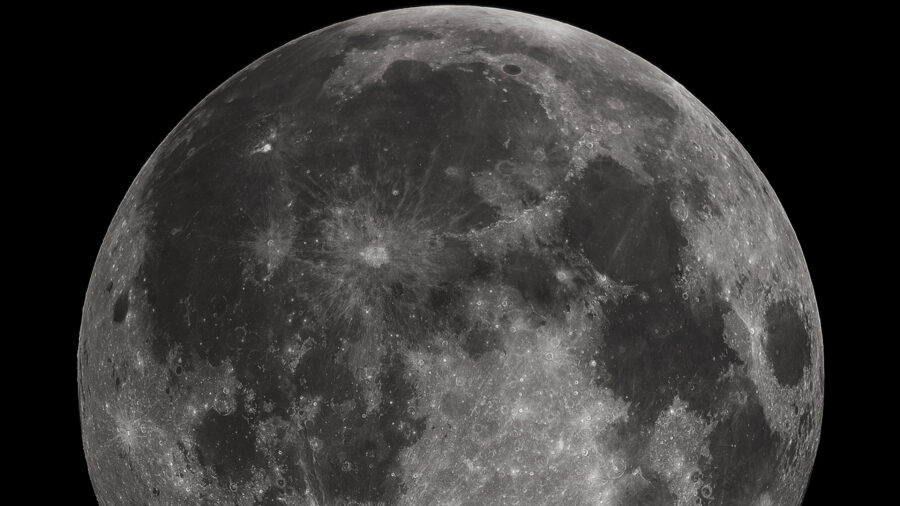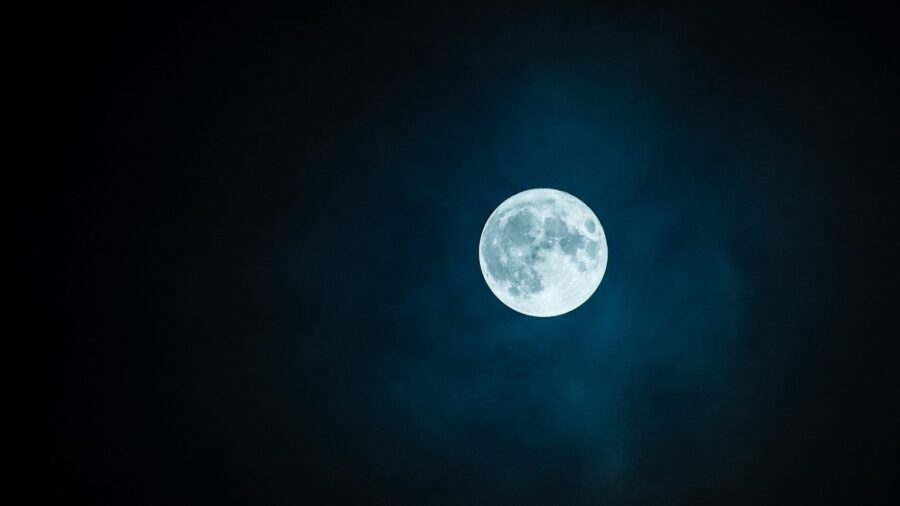There’s A Mysterious Chunk Of The Moon Orbiting Around Earth
Scientists believe an asteroid orbiting Earth may have once been part of the Moon.

The moon is no doubt our biggest and brightest satellite in the sky, but Earth has plenty of junk flying around it. However, not all of that junk comes from the Moon itself. Science Alert recently reported on a near-Earth asteroid, which is classified as a quasi-satellite, Kamo’oalewa, which may have come broken off of our lunar neighbor.
Kamo’oalewa was first discovered in 2016 with the Pan-STARRS at Haleakala Observatory. While the orbit of Kamo’oalewa has changed throughout its history orbiting our planet, it always stays relatively nearby. Its surface also contains silicates that reflect light in the same way that the moon does, leading to the aforementioned theory that it might be a chunk from Luna herself.
A new study titled “Orbital Pathways for a Lunar-Ejecta Origin of the Near-Earth Asteroid Kamo`oalewa,” authored by Jose Daniel Castro-Cisneros from the Department of Physics at the University of Arizona seeks to determine if the asteroid is lunar in origin. Of all the quasi-satellites orbiting around Earth, Kamo`oalewa happens to have the closest and most stable orbit. Kamo`oalewa’s unique orbital habits could point to it coming from moon ejecta.
But, why would that be the case, and how could this point to Kamo`oalewa being from the moon? Essentially, Kamo`oalewa is considered a quasi-satellite because the sun’s gravity pulls on it more than the Earth does. However, unlike other quasi-satellites, Kamo`oalewa frequently switches between a quasi-satellite orbit and a horseshoe orbit.
A horseshoe orbit is when a co-orbital object, like Kamo`oalewa, moves in a non-closed loop around a larger body (Earth), tracing a horseshoe-shaped ellipse over time. Again, why does this matter and how does it help scientists determine Kamo`oalewa’s potential origin? Well, it’s all in the simulations.

Scientists can run a large number of scenarios using numerous different variables to simulate impacts and ejections from the moon. In the vast majority of simulations, this ejecta simply leaves the orbit of the Earth and takes up a heliocentric orbit. However, a small number of these particles will not enter a heliocentric orbit and will instead take up a very similar orbit to Kamo`oalewa.
While these are theories and simulations, it’s certainly a strong theory based on the evidence and the very specific similarities to Kamo`oalewa’s orbits. Combine these similarities with the fact that Kamo`oalewa reflects light the same way the Moon does, and you have a pretty compelling case. To further test their theory, scientists will likely seek to observe the different lunar impact craters on the surface to see which one could be a good candidate for where Kamo`oalewa came from.
Proving that Kamo`oalewa came from the moon would be an exciting discovery, as it would be the first instance of this type of discovery. It would also give scientists a chance to study what is potentially ancient lunar material. Right now, there are several proposed missions in place to study Kamo`oalewa.
Two small missions have been proposed to study Kamo`oalewa, with one proposed by a team of graduate research assistants and another proposed by NASA. China has its own mission planned for 2025 that will take a sample of Kamo`oalewa. Hopefully, one of these missions can reveal if Kamo`oalewa is indeed a chunk of the moon.












